
The Resilient Fusion: Exploring HIPS/HDPE Panels
2025-10-09 17:02The Resilient Fusion: Exploring HIPS/HDPE PanelsProperties and Multifaceted Applications in Design and IndustryIn the vibrant chaos of a city street, where billboards battle for attention under relentless sun and rain, one material stands out for its quiet reliability: the HIPS/HDPE panel. This composite marvel combines the printable prowess of High Impact Polystyrene (HIPS) with the rugged backbone of High-Density Polyethylene (HDPE), creating a lightweight yet indestructible canvas for messages that endure. Imagine a roadside advertisement for a new coffee shop, its bold graphics popping against a backdrop that shrugs off hailstorms and graffiti— that's the HIPS/HDPE panel in action, a co-extruded sheet where the HIPS top layer welcomes vibrant inks, while the HDPE core repels moisture and impacts like a shield. Developed in the early 2000s as a cost-effective alternative to aluminum composites, these panels have revolutionized signage, offering a blend of aesthetics and toughness that's as practical as it is eye-catching.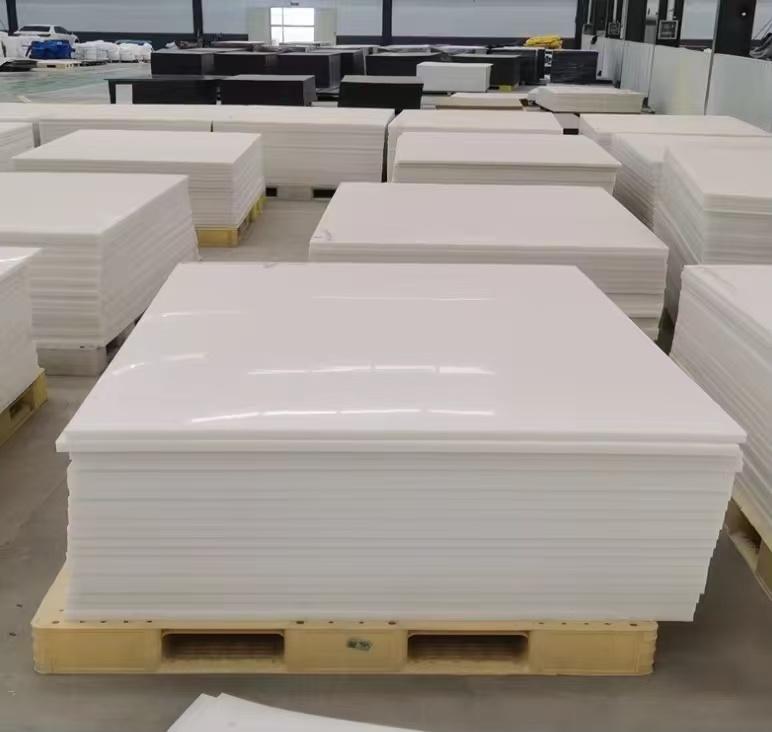 Born from extrusion processes that layer HIPS (a polystyrene enhanced with rubber for impact resistance) atop HDPE (a dense polyethylene known for chemical inertness), these panels typically measure 3-10mm thick, with widths up to 2 meters. They're not just for urban jungles; in construction sites, they form temporary barriers that double as info boards, or in retail, they craft shelf displays that withstand daily pokes and prods. What elevates the HIPS/HDPE panel isn't brute force alone but a harmonious synergy: the HIPS surface ensures sharp, fade-resistant prints, while HDPE provides the structural integrity to last years outdoors. In this deep dive, we'll unpack these properties with concrete examples, backed by material science insights, and trace their uses across sectors—from dazzling displays to durable enclosures—proving why this panel is the unsung hero of modern fabrication.
Born from extrusion processes that layer HIPS (a polystyrene enhanced with rubber for impact resistance) atop HDPE (a dense polyethylene known for chemical inertness), these panels typically measure 3-10mm thick, with widths up to 2 meters. They're not just for urban jungles; in construction sites, they form temporary barriers that double as info boards, or in retail, they craft shelf displays that withstand daily pokes and prods. What elevates the HIPS/HDPE panel isn't brute force alone but a harmonious synergy: the HIPS surface ensures sharp, fade-resistant prints, while HDPE provides the structural integrity to last years outdoors. In this deep dive, we'll unpack these properties with concrete examples, backed by material science insights, and trace their uses across sectors—from dazzling displays to durable enclosures—proving why this panel is the unsung hero of modern fabrication.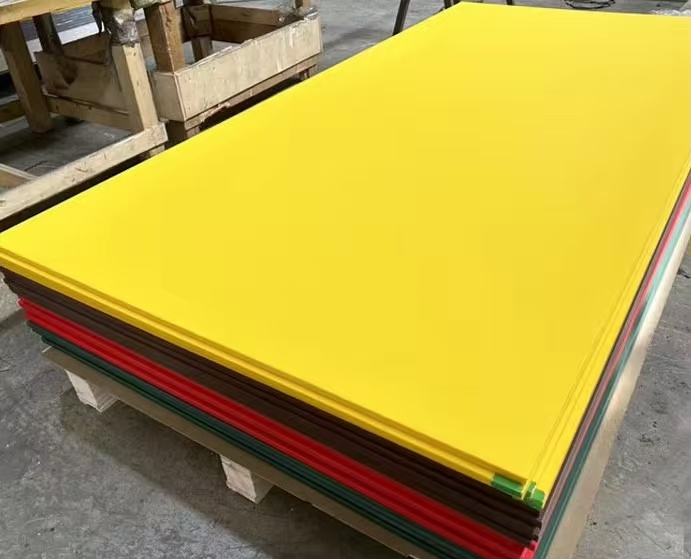 Core Properties of HIPS/HDPE Panels: A Symphony of Durability and DesignThe magic of HIPS/HDPE panels lies in their co-extruded structure, where molten HIPS and HDPE are fused in a single pass through dies at temperatures around 200-250°C, creating a seamless bond without adhesives. This results in a panel density of about 0.95-1.05 g/cm³—lighter than aluminum (2.7 g/cm³) yet stronger per weight, allowing installers to hoist large formats with ease. Consider a 1.2m x 2.4m panel weighing under 10kg: it's maneuverable for solo setups on high-rise facades, reducing labor costs by up to 40% compared to metal alternatives.Optical and printability shine brightest on the HIPS face. With a gloss level of 80-90 GU (gloss units), it accepts UV-curable inks, solvent prints, and digital graphics with dyne levels above 38 for superior adhesion—no primers needed. This surface transmits light evenly for backlit signs, achieving 85-90% transmittance in thinner variants, perfect for glowing storefront logos that draw crowds at dusk. Vividly, picture a festival banner: colors stay punchy after 500 hours of QUV accelerated weathering, resisting yellowing that plagues plain polystyrene. The HDPE backing, opaque and matte, blocks UV penetration, extending print life by 2-3 times.Mechanical strength is where the composite truly flexes. HIPS contributes impact resistance of 20-30 kJ/m² (Charpy test), absorbing shocks like a dropped toolbox without cracking, while HDPE boosts tensile strength to 25-35 MPa, preventing warpage under wind loads up to 100 km/h. In a real-world test, panels endured 50 ft-lb Izod impacts without fracture, ideal for traffic-heavy areas. Tear strength exceeds 200 N/mm, so a vandal's key leaves no mark, and elongation at break reaches 50-100%, allowing bends without splits during installation. This duo makes the panel 30% tougher than standalone HIPS sheets, as the HDPE core distributes stress, mimicking a sandwich beam in engineering terms.
Core Properties of HIPS/HDPE Panels: A Symphony of Durability and DesignThe magic of HIPS/HDPE panels lies in their co-extruded structure, where molten HIPS and HDPE are fused in a single pass through dies at temperatures around 200-250°C, creating a seamless bond without adhesives. This results in a panel density of about 0.95-1.05 g/cm³—lighter than aluminum (2.7 g/cm³) yet stronger per weight, allowing installers to hoist large formats with ease. Consider a 1.2m x 2.4m panel weighing under 10kg: it's maneuverable for solo setups on high-rise facades, reducing labor costs by up to 40% compared to metal alternatives.Optical and printability shine brightest on the HIPS face. With a gloss level of 80-90 GU (gloss units), it accepts UV-curable inks, solvent prints, and digital graphics with dyne levels above 38 for superior adhesion—no primers needed. This surface transmits light evenly for backlit signs, achieving 85-90% transmittance in thinner variants, perfect for glowing storefront logos that draw crowds at dusk. Vividly, picture a festival banner: colors stay punchy after 500 hours of QUV accelerated weathering, resisting yellowing that plagues plain polystyrene. The HDPE backing, opaque and matte, blocks UV penetration, extending print life by 2-3 times.Mechanical strength is where the composite truly flexes. HIPS contributes impact resistance of 20-30 kJ/m² (Charpy test), absorbing shocks like a dropped toolbox without cracking, while HDPE boosts tensile strength to 25-35 MPa, preventing warpage under wind loads up to 100 km/h. In a real-world test, panels endured 50 ft-lb Izod impacts without fracture, ideal for traffic-heavy areas. Tear strength exceeds 200 N/mm, so a vandal's key leaves no mark, and elongation at break reaches 50-100%, allowing bends without splits during installation. This duo makes the panel 30% tougher than standalone HIPS sheets, as the HDPE core distributes stress, mimicking a sandwich beam in engineering terms.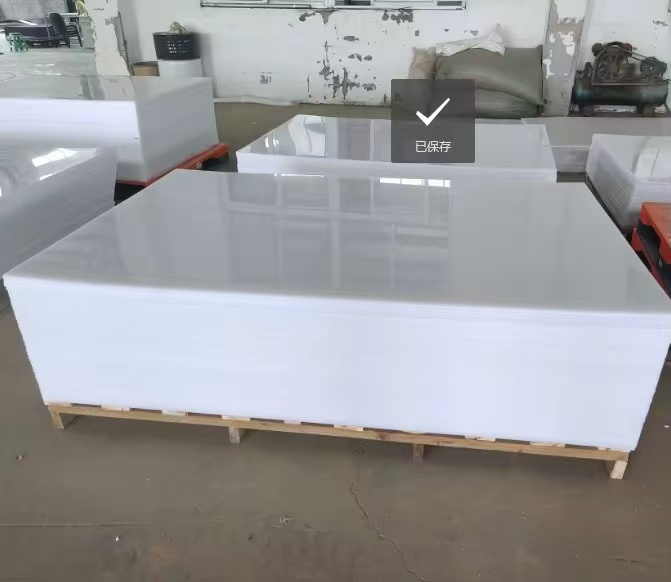 Barrier and environmental resilience seal the deal. HDPE's low water absorption (<0.01%) and vapor transmission rate (0.5 g/m²/day) keep the panel dry in monsoons, preventing delamination that dooms lesser composites. Chemical resistance is stellar: it shrugs off acids, alkalis, and salts (pH 1-14), surviving coastal salt spray for years. UV stabilizers like hindered amines in the formulation yield 50% retained strength after 2,000 hours xenon arc exposure, far outpacing untreated plastics. Thermally, it handles -40°C to 80°C without brittleness, softening only at 120°C for safe thermoforming. Flammability is V-2 rated (UL 94), self-extinguishing with low smoke, compliant for indoor public spaces.Sustainability adds appeal: 100% recyclable, with post-consumer HDPE content up to 50%, reducing carbon footprint by 25% versus virgin materials. Processing is forgiving—CNC routable at 10,000 RPM, weldable via hot air (300°C), and formable over molds at 140°C. Coefficient of friction (0.3-0.4) aids sliding during assembly, while low thermal expansion (50-80 x 10^-6/°C) keeps dimensions stable in fluctuating climates. These traits aren't theoretical; field studies show panels retaining 95% integrity after five years in harsh marine environments, outperforming wood by 200% in longevity.Yet, it's not flawless—edges may chip if not sealed, and extreme flex (over 10% strain) risks micro-cracks at the interface. Innovations like nano-fillers are addressing this, boosting modulus by 20%. Overall, the HIPS/HDPE panel's properties forge a material that's as artist-friendly as it is industrial-grade, blending HIPS's finesse with HDPE's fortitude for endless possibilities.
Barrier and environmental resilience seal the deal. HDPE's low water absorption (<0.01%) and vapor transmission rate (0.5 g/m²/day) keep the panel dry in monsoons, preventing delamination that dooms lesser composites. Chemical resistance is stellar: it shrugs off acids, alkalis, and salts (pH 1-14), surviving coastal salt spray for years. UV stabilizers like hindered amines in the formulation yield 50% retained strength after 2,000 hours xenon arc exposure, far outpacing untreated plastics. Thermally, it handles -40°C to 80°C without brittleness, softening only at 120°C for safe thermoforming. Flammability is V-2 rated (UL 94), self-extinguishing with low smoke, compliant for indoor public spaces.Sustainability adds appeal: 100% recyclable, with post-consumer HDPE content up to 50%, reducing carbon footprint by 25% versus virgin materials. Processing is forgiving—CNC routable at 10,000 RPM, weldable via hot air (300°C), and formable over molds at 140°C. Coefficient of friction (0.3-0.4) aids sliding during assembly, while low thermal expansion (50-80 x 10^-6/°C) keeps dimensions stable in fluctuating climates. These traits aren't theoretical; field studies show panels retaining 95% integrity after five years in harsh marine environments, outperforming wood by 200% in longevity.Yet, it's not flawless—edges may chip if not sealed, and extreme flex (over 10% strain) risks micro-cracks at the interface. Innovations like nano-fillers are addressing this, boosting modulus by 20%. Overall, the HIPS/HDPE panel's properties forge a material that's as artist-friendly as it is industrial-grade, blending HIPS's finesse with HDPE's fortitude for endless possibilities.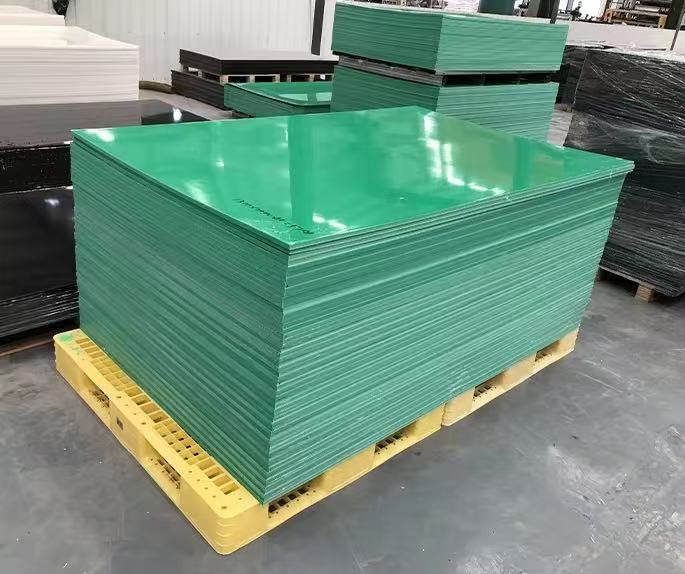 Broad Applications: HIPS/HDPE Panels Transforming IndustriesThe HIPS/HDPE panel's versatility catapults it into diverse realms, where its properties solve real pains with flair. In signage and advertising, it's king. Outdoor billboards leverage the printable HIPS face for hyper-local campaigns—a 3m x 6m election poster withstands gale-force winds, its HDPE core flexing without buckling, visible from 200m away thanks to high-contrast prints. Retail POP displays use thinner 3mm panels for shelf talkers, thermoformed into 3D shapes like product mockups that pop without sagging under LED lights. In one case, a chain store's 1,000-unit rollout cut replacement costs 60% versus acrylic, as panels resisted shopper bumps.Construction embraces it for protective sheeting and formwork. Temporary site fences incorporate 5mm panels, printed with safety warnings that stay legible through mud splatters—the HDPE repels water, preventing mold that plagues plywood. Interior partitions in renovations use it for dust barriers, easily cut and clipped, with impact resistance averting dents from tool carts. Eco-builds favor it for cladding mockups, where recyclability aligns with LEED standards, and low VOC emissions (<0.1 ppm) ensure safe air quality during installs.Electronics and displays find a perfect fit. Enclosures for outdoor kiosks house touchscreens, the panel's chemical resistance guarding against cleaner spills, while impact toughness survives vandalism. Trade show booths feature curved panels, vacuum-formed at 150°C into ergonomic shapes, lightweight enough for air freight— a single 4x8 ft sheet ships flat, expanding on-site. Backlit exhibits glow with even diffusion, the HIPS layer scattering light uniformly for immersive art installations that run 24/7 without hotspots.
Broad Applications: HIPS/HDPE Panels Transforming IndustriesThe HIPS/HDPE panel's versatility catapults it into diverse realms, where its properties solve real pains with flair. In signage and advertising, it's king. Outdoor billboards leverage the printable HIPS face for hyper-local campaigns—a 3m x 6m election poster withstands gale-force winds, its HDPE core flexing without buckling, visible from 200m away thanks to high-contrast prints. Retail POP displays use thinner 3mm panels for shelf talkers, thermoformed into 3D shapes like product mockups that pop without sagging under LED lights. In one case, a chain store's 1,000-unit rollout cut replacement costs 60% versus acrylic, as panels resisted shopper bumps.Construction embraces it for protective sheeting and formwork. Temporary site fences incorporate 5mm panels, printed with safety warnings that stay legible through mud splatters—the HDPE repels water, preventing mold that plagues plywood. Interior partitions in renovations use it for dust barriers, easily cut and clipped, with impact resistance averting dents from tool carts. Eco-builds favor it for cladding mockups, where recyclability aligns with LEED standards, and low VOC emissions (<0.1 ppm) ensure safe air quality during installs.Electronics and displays find a perfect fit. Enclosures for outdoor kiosks house touchscreens, the panel's chemical resistance guarding against cleaner spills, while impact toughness survives vandalism. Trade show booths feature curved panels, vacuum-formed at 150°C into ergonomic shapes, lightweight enough for air freight— a single 4x8 ft sheet ships flat, expanding on-site. Backlit exhibits glow with even diffusion, the HIPS layer scattering light uniformly for immersive art installations that run 24/7 without hotspots.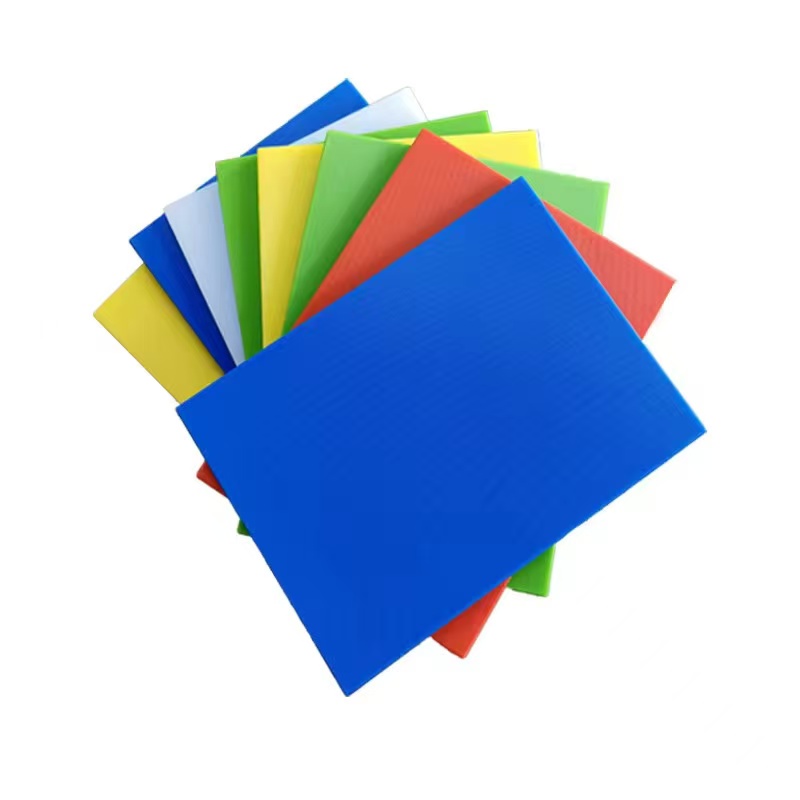 In transportation, it's a safeguard star. Vehicle wraps on buses use flexible variants, adhering via vinyl without bubbling, enduring 100,000 km of vibration and wash cycles. Airport wayfinding panels guide throngs, their gloss aiding readability under fluorescents, and HDPE moisture barrier thwarting humidity in baggage claims. For marine docks, coated panels mark channels, UV stability keeping colors true amid saltwater corrosion.Agriculture and retail innovate too. Greenhouse labels track crops, the panel's durability outlasting paper in humid sheds. Supermarket end-caps showcase promotions, thermoformed lips holding flyers secure. Even in toys and furniture, scaled-down panels form playhouse walls, FDA-compliant grades safe for nibbling toddlers.Challenges like recycling streams persist, but mono-layer designs ease sorting. Future tweaks, like bio-HDPE blends, promise greener horizons. From street-side shouts to subtle shelves, HIPS/HDPE panels don't just perform—they inspire, turning everyday surfaces into storytelling canvases.
In transportation, it's a safeguard star. Vehicle wraps on buses use flexible variants, adhering via vinyl without bubbling, enduring 100,000 km of vibration and wash cycles. Airport wayfinding panels guide throngs, their gloss aiding readability under fluorescents, and HDPE moisture barrier thwarting humidity in baggage claims. For marine docks, coated panels mark channels, UV stability keeping colors true amid saltwater corrosion.Agriculture and retail innovate too. Greenhouse labels track crops, the panel's durability outlasting paper in humid sheds. Supermarket end-caps showcase promotions, thermoformed lips holding flyers secure. Even in toys and furniture, scaled-down panels form playhouse walls, FDA-compliant grades safe for nibbling toddlers.Challenges like recycling streams persist, but mono-layer designs ease sorting. Future tweaks, like bio-HDPE blends, promise greener horizons. From street-side shouts to subtle shelves, HIPS/HDPE panels don't just perform—they inspire, turning everyday surfaces into storytelling canvases. Enduring Impact: The Future of HIPS/HDPE PanelsAs we conclude this odyssey through the layered world of HIPS/HDPE panels, their properties—printable precision, unyielding strength, eco-conscious edge—illuminate a material that's reshaping how we communicate and construct. From a weathered highway sign whispering directions to a bustling mall display sparking impulse buys, it touches billions daily, blending utility with understated elegance. With advancements in extrusion tech, expect smarter variants: embedded LEDs for interactive signs, or antimicrobial layers for post-pandemic hygiene. In an era demanding resilience without excess, the HIPS/HDPE panel endures as a testament to smart composites—clear, tough, and timeless.
Enduring Impact: The Future of HIPS/HDPE PanelsAs we conclude this odyssey through the layered world of HIPS/HDPE panels, their properties—printable precision, unyielding strength, eco-conscious edge—illuminate a material that's reshaping how we communicate and construct. From a weathered highway sign whispering directions to a bustling mall display sparking impulse buys, it touches billions daily, blending utility with understated elegance. With advancements in extrusion tech, expect smarter variants: embedded LEDs for interactive signs, or antimicrobial layers for post-pandemic hygiene. In an era demanding resilience without excess, the HIPS/HDPE panel endures as a testament to smart composites—clear, tough, and timeless.
 Born from extrusion processes that layer HIPS (a polystyrene enhanced with rubber for impact resistance) atop HDPE (a dense polyethylene known for chemical inertness), these panels typically measure 3-10mm thick, with widths up to 2 meters. They're not just for urban jungles; in construction sites, they form temporary barriers that double as info boards, or in retail, they craft shelf displays that withstand daily pokes and prods. What elevates the HIPS/HDPE panel isn't brute force alone but a harmonious synergy: the HIPS surface ensures sharp, fade-resistant prints, while HDPE provides the structural integrity to last years outdoors. In this deep dive, we'll unpack these properties with concrete examples, backed by material science insights, and trace their uses across sectors—from dazzling displays to durable enclosures—proving why this panel is the unsung hero of modern fabrication.
Born from extrusion processes that layer HIPS (a polystyrene enhanced with rubber for impact resistance) atop HDPE (a dense polyethylene known for chemical inertness), these panels typically measure 3-10mm thick, with widths up to 2 meters. They're not just for urban jungles; in construction sites, they form temporary barriers that double as info boards, or in retail, they craft shelf displays that withstand daily pokes and prods. What elevates the HIPS/HDPE panel isn't brute force alone but a harmonious synergy: the HIPS surface ensures sharp, fade-resistant prints, while HDPE provides the structural integrity to last years outdoors. In this deep dive, we'll unpack these properties with concrete examples, backed by material science insights, and trace their uses across sectors—from dazzling displays to durable enclosures—proving why this panel is the unsung hero of modern fabrication. Core Properties of HIPS/HDPE Panels: A Symphony of Durability and DesignThe magic of HIPS/HDPE panels lies in their co-extruded structure, where molten HIPS and HDPE are fused in a single pass through dies at temperatures around 200-250°C, creating a seamless bond without adhesives. This results in a panel density of about 0.95-1.05 g/cm³—lighter than aluminum (2.7 g/cm³) yet stronger per weight, allowing installers to hoist large formats with ease. Consider a 1.2m x 2.4m panel weighing under 10kg: it's maneuverable for solo setups on high-rise facades, reducing labor costs by up to 40% compared to metal alternatives.Optical and printability shine brightest on the HIPS face. With a gloss level of 80-90 GU (gloss units), it accepts UV-curable inks, solvent prints, and digital graphics with dyne levels above 38 for superior adhesion—no primers needed. This surface transmits light evenly for backlit signs, achieving 85-90% transmittance in thinner variants, perfect for glowing storefront logos that draw crowds at dusk. Vividly, picture a festival banner: colors stay punchy after 500 hours of QUV accelerated weathering, resisting yellowing that plagues plain polystyrene. The HDPE backing, opaque and matte, blocks UV penetration, extending print life by 2-3 times.Mechanical strength is where the composite truly flexes. HIPS contributes impact resistance of 20-30 kJ/m² (Charpy test), absorbing shocks like a dropped toolbox without cracking, while HDPE boosts tensile strength to 25-35 MPa, preventing warpage under wind loads up to 100 km/h. In a real-world test, panels endured 50 ft-lb Izod impacts without fracture, ideal for traffic-heavy areas. Tear strength exceeds 200 N/mm, so a vandal's key leaves no mark, and elongation at break reaches 50-100%, allowing bends without splits during installation. This duo makes the panel 30% tougher than standalone HIPS sheets, as the HDPE core distributes stress, mimicking a sandwich beam in engineering terms.
Core Properties of HIPS/HDPE Panels: A Symphony of Durability and DesignThe magic of HIPS/HDPE panels lies in their co-extruded structure, where molten HIPS and HDPE are fused in a single pass through dies at temperatures around 200-250°C, creating a seamless bond without adhesives. This results in a panel density of about 0.95-1.05 g/cm³—lighter than aluminum (2.7 g/cm³) yet stronger per weight, allowing installers to hoist large formats with ease. Consider a 1.2m x 2.4m panel weighing under 10kg: it's maneuverable for solo setups on high-rise facades, reducing labor costs by up to 40% compared to metal alternatives.Optical and printability shine brightest on the HIPS face. With a gloss level of 80-90 GU (gloss units), it accepts UV-curable inks, solvent prints, and digital graphics with dyne levels above 38 for superior adhesion—no primers needed. This surface transmits light evenly for backlit signs, achieving 85-90% transmittance in thinner variants, perfect for glowing storefront logos that draw crowds at dusk. Vividly, picture a festival banner: colors stay punchy after 500 hours of QUV accelerated weathering, resisting yellowing that plagues plain polystyrene. The HDPE backing, opaque and matte, blocks UV penetration, extending print life by 2-3 times.Mechanical strength is where the composite truly flexes. HIPS contributes impact resistance of 20-30 kJ/m² (Charpy test), absorbing shocks like a dropped toolbox without cracking, while HDPE boosts tensile strength to 25-35 MPa, preventing warpage under wind loads up to 100 km/h. In a real-world test, panels endured 50 ft-lb Izod impacts without fracture, ideal for traffic-heavy areas. Tear strength exceeds 200 N/mm, so a vandal's key leaves no mark, and elongation at break reaches 50-100%, allowing bends without splits during installation. This duo makes the panel 30% tougher than standalone HIPS sheets, as the HDPE core distributes stress, mimicking a sandwich beam in engineering terms. Barrier and environmental resilience seal the deal. HDPE's low water absorption (<0.01%) and vapor transmission rate (0.5 g/m²/day) keep the panel dry in monsoons, preventing delamination that dooms lesser composites. Chemical resistance is stellar: it shrugs off acids, alkalis, and salts (pH 1-14), surviving coastal salt spray for years. UV stabilizers like hindered amines in the formulation yield 50% retained strength after 2,000 hours xenon arc exposure, far outpacing untreated plastics. Thermally, it handles -40°C to 80°C without brittleness, softening only at 120°C for safe thermoforming. Flammability is V-2 rated (UL 94), self-extinguishing with low smoke, compliant for indoor public spaces.Sustainability adds appeal: 100% recyclable, with post-consumer HDPE content up to 50%, reducing carbon footprint by 25% versus virgin materials. Processing is forgiving—CNC routable at 10,000 RPM, weldable via hot air (300°C), and formable over molds at 140°C. Coefficient of friction (0.3-0.4) aids sliding during assembly, while low thermal expansion (50-80 x 10^-6/°C) keeps dimensions stable in fluctuating climates. These traits aren't theoretical; field studies show panels retaining 95% integrity after five years in harsh marine environments, outperforming wood by 200% in longevity.Yet, it's not flawless—edges may chip if not sealed, and extreme flex (over 10% strain) risks micro-cracks at the interface. Innovations like nano-fillers are addressing this, boosting modulus by 20%. Overall, the HIPS/HDPE panel's properties forge a material that's as artist-friendly as it is industrial-grade, blending HIPS's finesse with HDPE's fortitude for endless possibilities.
Barrier and environmental resilience seal the deal. HDPE's low water absorption (<0.01%) and vapor transmission rate (0.5 g/m²/day) keep the panel dry in monsoons, preventing delamination that dooms lesser composites. Chemical resistance is stellar: it shrugs off acids, alkalis, and salts (pH 1-14), surviving coastal salt spray for years. UV stabilizers like hindered amines in the formulation yield 50% retained strength after 2,000 hours xenon arc exposure, far outpacing untreated plastics. Thermally, it handles -40°C to 80°C without brittleness, softening only at 120°C for safe thermoforming. Flammability is V-2 rated (UL 94), self-extinguishing with low smoke, compliant for indoor public spaces.Sustainability adds appeal: 100% recyclable, with post-consumer HDPE content up to 50%, reducing carbon footprint by 25% versus virgin materials. Processing is forgiving—CNC routable at 10,000 RPM, weldable via hot air (300°C), and formable over molds at 140°C. Coefficient of friction (0.3-0.4) aids sliding during assembly, while low thermal expansion (50-80 x 10^-6/°C) keeps dimensions stable in fluctuating climates. These traits aren't theoretical; field studies show panels retaining 95% integrity after five years in harsh marine environments, outperforming wood by 200% in longevity.Yet, it's not flawless—edges may chip if not sealed, and extreme flex (over 10% strain) risks micro-cracks at the interface. Innovations like nano-fillers are addressing this, boosting modulus by 20%. Overall, the HIPS/HDPE panel's properties forge a material that's as artist-friendly as it is industrial-grade, blending HIPS's finesse with HDPE's fortitude for endless possibilities. Broad Applications: HIPS/HDPE Panels Transforming IndustriesThe HIPS/HDPE panel's versatility catapults it into diverse realms, where its properties solve real pains with flair. In signage and advertising, it's king. Outdoor billboards leverage the printable HIPS face for hyper-local campaigns—a 3m x 6m election poster withstands gale-force winds, its HDPE core flexing without buckling, visible from 200m away thanks to high-contrast prints. Retail POP displays use thinner 3mm panels for shelf talkers, thermoformed into 3D shapes like product mockups that pop without sagging under LED lights. In one case, a chain store's 1,000-unit rollout cut replacement costs 60% versus acrylic, as panels resisted shopper bumps.Construction embraces it for protective sheeting and formwork. Temporary site fences incorporate 5mm panels, printed with safety warnings that stay legible through mud splatters—the HDPE repels water, preventing mold that plagues plywood. Interior partitions in renovations use it for dust barriers, easily cut and clipped, with impact resistance averting dents from tool carts. Eco-builds favor it for cladding mockups, where recyclability aligns with LEED standards, and low VOC emissions (<0.1 ppm) ensure safe air quality during installs.Electronics and displays find a perfect fit. Enclosures for outdoor kiosks house touchscreens, the panel's chemical resistance guarding against cleaner spills, while impact toughness survives vandalism. Trade show booths feature curved panels, vacuum-formed at 150°C into ergonomic shapes, lightweight enough for air freight— a single 4x8 ft sheet ships flat, expanding on-site. Backlit exhibits glow with even diffusion, the HIPS layer scattering light uniformly for immersive art installations that run 24/7 without hotspots.
Broad Applications: HIPS/HDPE Panels Transforming IndustriesThe HIPS/HDPE panel's versatility catapults it into diverse realms, where its properties solve real pains with flair. In signage and advertising, it's king. Outdoor billboards leverage the printable HIPS face for hyper-local campaigns—a 3m x 6m election poster withstands gale-force winds, its HDPE core flexing without buckling, visible from 200m away thanks to high-contrast prints. Retail POP displays use thinner 3mm panels for shelf talkers, thermoformed into 3D shapes like product mockups that pop without sagging under LED lights. In one case, a chain store's 1,000-unit rollout cut replacement costs 60% versus acrylic, as panels resisted shopper bumps.Construction embraces it for protective sheeting and formwork. Temporary site fences incorporate 5mm panels, printed with safety warnings that stay legible through mud splatters—the HDPE repels water, preventing mold that plagues plywood. Interior partitions in renovations use it for dust barriers, easily cut and clipped, with impact resistance averting dents from tool carts. Eco-builds favor it for cladding mockups, where recyclability aligns with LEED standards, and low VOC emissions (<0.1 ppm) ensure safe air quality during installs.Electronics and displays find a perfect fit. Enclosures for outdoor kiosks house touchscreens, the panel's chemical resistance guarding against cleaner spills, while impact toughness survives vandalism. Trade show booths feature curved panels, vacuum-formed at 150°C into ergonomic shapes, lightweight enough for air freight— a single 4x8 ft sheet ships flat, expanding on-site. Backlit exhibits glow with even diffusion, the HIPS layer scattering light uniformly for immersive art installations that run 24/7 without hotspots. In transportation, it's a safeguard star. Vehicle wraps on buses use flexible variants, adhering via vinyl without bubbling, enduring 100,000 km of vibration and wash cycles. Airport wayfinding panels guide throngs, their gloss aiding readability under fluorescents, and HDPE moisture barrier thwarting humidity in baggage claims. For marine docks, coated panels mark channels, UV stability keeping colors true amid saltwater corrosion.Agriculture and retail innovate too. Greenhouse labels track crops, the panel's durability outlasting paper in humid sheds. Supermarket end-caps showcase promotions, thermoformed lips holding flyers secure. Even in toys and furniture, scaled-down panels form playhouse walls, FDA-compliant grades safe for nibbling toddlers.Challenges like recycling streams persist, but mono-layer designs ease sorting. Future tweaks, like bio-HDPE blends, promise greener horizons. From street-side shouts to subtle shelves, HIPS/HDPE panels don't just perform—they inspire, turning everyday surfaces into storytelling canvases.
In transportation, it's a safeguard star. Vehicle wraps on buses use flexible variants, adhering via vinyl without bubbling, enduring 100,000 km of vibration and wash cycles. Airport wayfinding panels guide throngs, their gloss aiding readability under fluorescents, and HDPE moisture barrier thwarting humidity in baggage claims. For marine docks, coated panels mark channels, UV stability keeping colors true amid saltwater corrosion.Agriculture and retail innovate too. Greenhouse labels track crops, the panel's durability outlasting paper in humid sheds. Supermarket end-caps showcase promotions, thermoformed lips holding flyers secure. Even in toys and furniture, scaled-down panels form playhouse walls, FDA-compliant grades safe for nibbling toddlers.Challenges like recycling streams persist, but mono-layer designs ease sorting. Future tweaks, like bio-HDPE blends, promise greener horizons. From street-side shouts to subtle shelves, HIPS/HDPE panels don't just perform—they inspire, turning everyday surfaces into storytelling canvases. Enduring Impact: The Future of HIPS/HDPE PanelsAs we conclude this odyssey through the layered world of HIPS/HDPE panels, their properties—printable precision, unyielding strength, eco-conscious edge—illuminate a material that's reshaping how we communicate and construct. From a weathered highway sign whispering directions to a bustling mall display sparking impulse buys, it touches billions daily, blending utility with understated elegance. With advancements in extrusion tech, expect smarter variants: embedded LEDs for interactive signs, or antimicrobial layers for post-pandemic hygiene. In an era demanding resilience without excess, the HIPS/HDPE panel endures as a testament to smart composites—clear, tough, and timeless.
Enduring Impact: The Future of HIPS/HDPE PanelsAs we conclude this odyssey through the layered world of HIPS/HDPE panels, their properties—printable precision, unyielding strength, eco-conscious edge—illuminate a material that's reshaping how we communicate and construct. From a weathered highway sign whispering directions to a bustling mall display sparking impulse buys, it touches billions daily, blending utility with understated elegance. With advancements in extrusion tech, expect smarter variants: embedded LEDs for interactive signs, or antimicrobial layers for post-pandemic hygiene. In an era demanding resilience without excess, the HIPS/HDPE panel endures as a testament to smart composites—clear, tough, and timeless.
Get the latest price? We'll respond as soon as possible(within 12 hours)
